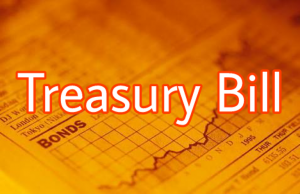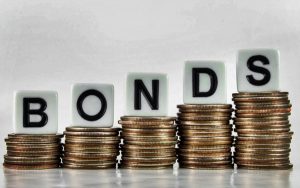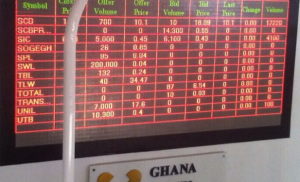What is Inflation?
Inflation as measured by the consumer price index reflects the annual percentage change in the cost to the average consumer of acquiring a basket of goods and services that may be fixed or changed at specified intervals, such as yearly. The Laspeyres formula is generally used. Data for inflation are averages for the year, not end-of-period data.
The inflation rate for consumer prices in Ghana moved over the past 55 years between -8.4% and 122.9%. For 2020, an inflation rate of 9.9% was calculated.
During the observation period from 1965 to 2020, the average inflation rate was 27.8% per year. Overall, the price increase was 26,834,719.52 %. An item that cost 100 Cedi in 1965 was so charged 26,834,819.52 Cedi in the beginning of 2021.
In only a few countries negative inflation rates are achieved. This means that the general price level is declining and consumer prices get cheaper. This case is called deflation. In comparison to other countries, the drastic price increases are no longer on average. Usually this is a sign of political and economic turmoil.
Source: WorldData.info
Ghana’s Inflation rate since 2012
| Year | Ghana | Ø World | |
|---|---|---|---|
| 2020 | 9.89 % | 1.89 % | |
| 2019 | 7.14 % | 2.21 % | |
| 2018 | 7.81 % | 2.44 % | |
| 2017 | 12.37 % | 2.19 % | |
| 2016 | 17.45 % | 1.55 % | |
| 2015 | 17.15 % | 1.43 % | |
| 2014 | 15.49 % | 2.35 % | |
| 2013 | 11.67 % | 2.62 % | |
| 2012 | 11.19 % | 3.73 % | |
April 2022 Inflation hit 23.6%
The national year-on-year inflation rate was 23.6% in April 2022, which is 4.2 percentage points higher than the
19.4% recorded in March 2022 (see Table 1). Month-on month inflation between March 2022 and April 2022 was
5.1% . Four Divisions (Transport, Household Equipment and Routine Maintenance, Food and Non-Alcoholic Beverages, and Housing, Water, Electricity, Gas and Other Fuels) recorded inflation rates above the national average of 23.6% with Transport (33.5% ) recording the highest inflation.
Regional Inflation
At the regional level, the overall year-on-year inflation ranged from 18.4% in the Upper East Region to 26.7% in
the Central Region. Central Region again recorded the highest month-on-month inflation (8.8%). All regions recorded positive month-on-month inflation rate in April 2022 (above 2.0%).
Food and Non-Food Inflation
This month’s food inflation (26.6%) is higher than both last month food inflation (22.4%) and the average of the previous 12 months (13.5%). Food inflation’s contribution to total inflation however, decreased from 51.4% in March 2022 to 50.0% in April 2022.
Overall month-on month food inflation was 5.8%, which is higher than both the twelve month national month-on-month rolling average of food inflation (2.0%) and the rate recorded for April 2021 (2.3%). All the 15 food subclasses recorded positive month-on-month inflation (see figure 4) with Fruit and Vegetable Juices recording the highest (15.3%).
Non-food year-on-year inflation on average went up again in April 2022 compared to March 2022 (from 17.0% to
21.3%). Only one out of the 12 Non-food Divisions had the 12 months rolling average to be higher than the year-on year inflation for April 2022 for the divisions Transport is the Division that recorded the highest inflation in April 2022 (33.5%).
Development of inflation rates for consumer goods in Ghana
| Ghana Inflation Rate – Historical Data | ||
|---|---|---|
| Year | Inflation Rate (%) | Annual Change |
| 2020 | 9.95% | 2.78% |
| 2019 | 7.18% | 6.77% |
| 2018 | 0.41% | -11.29% |
| 2017 | 11.70% | -5.76% |
| 2016 | 17.45% | 0.30% |
| 2015 | 17.15% | 1.66% |
| 2014 | 15.49% | 3.82% |
| 2013 | 11.67% | 4.54% |
| 2012 | 7.13% | -1.60% |




